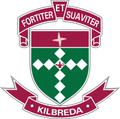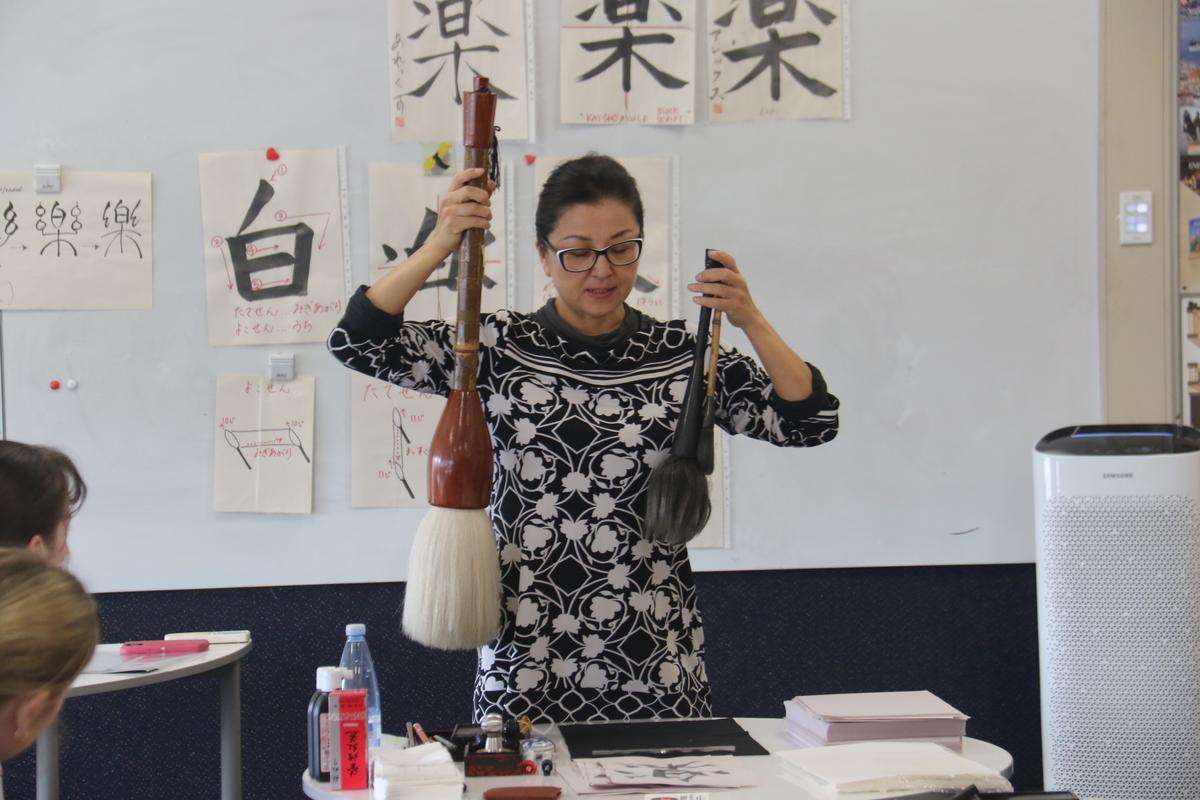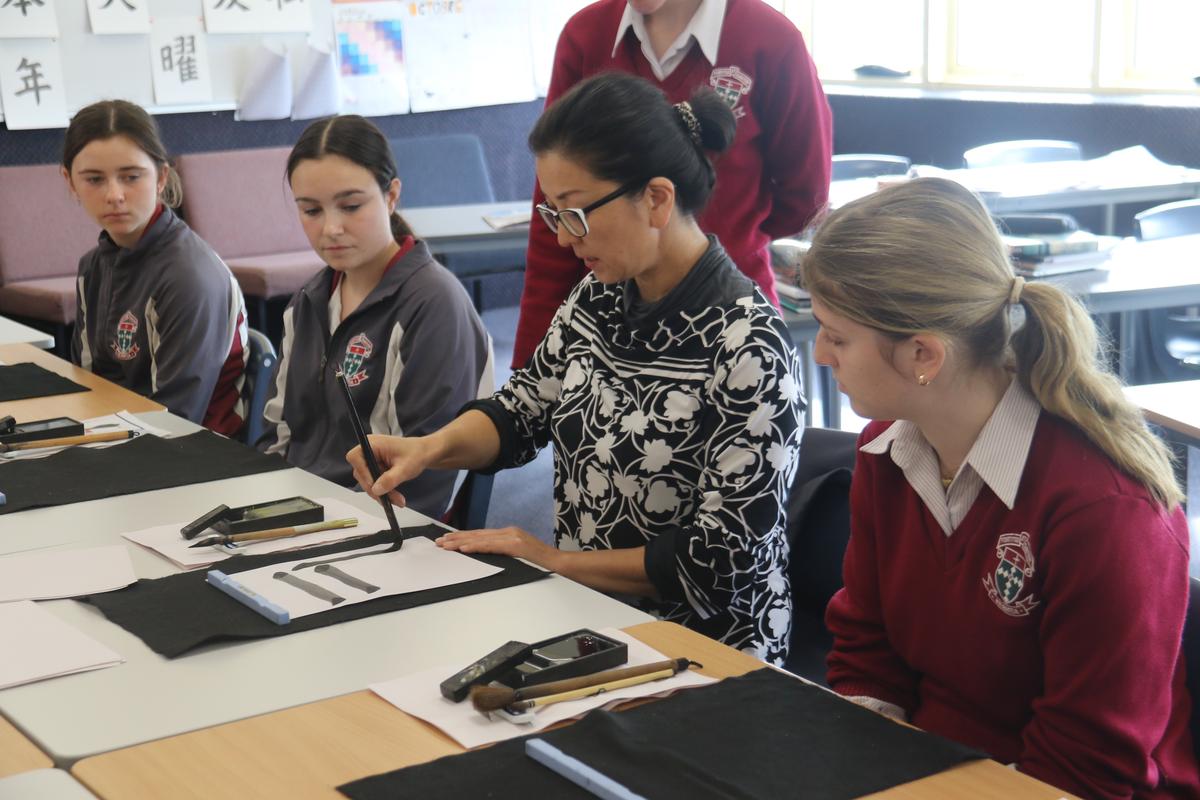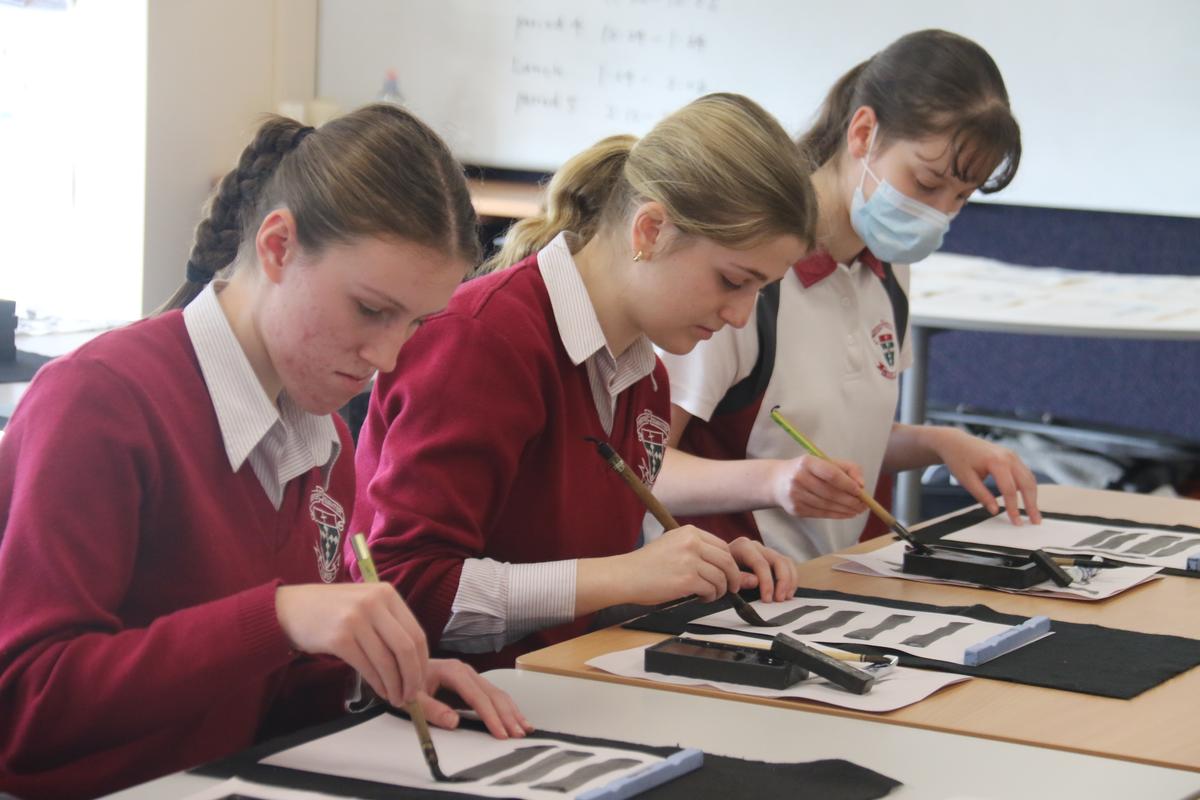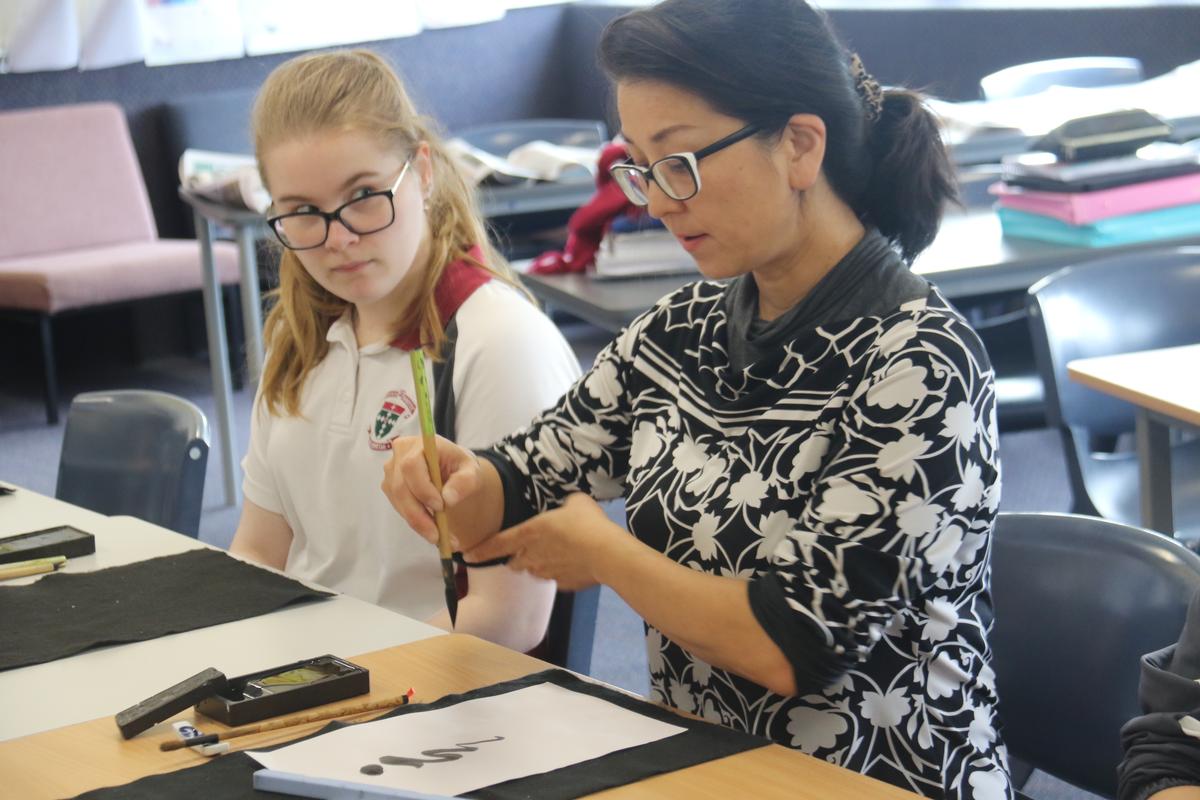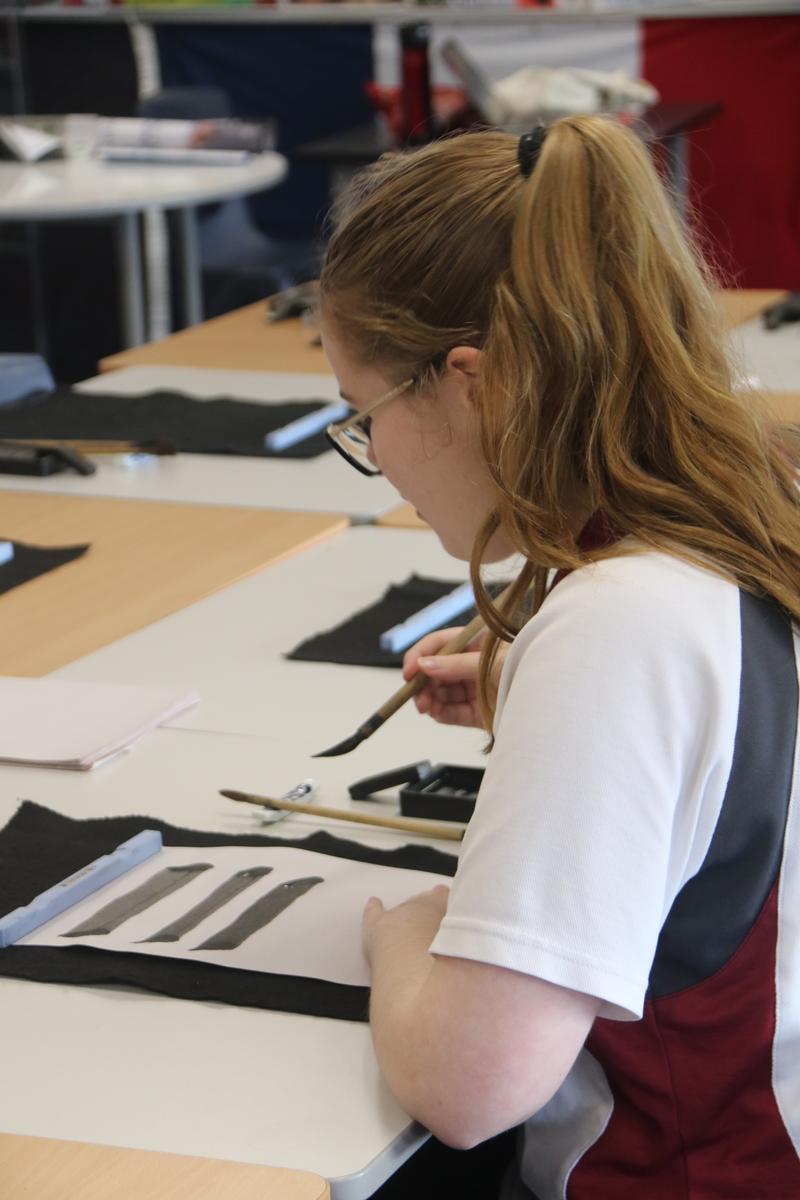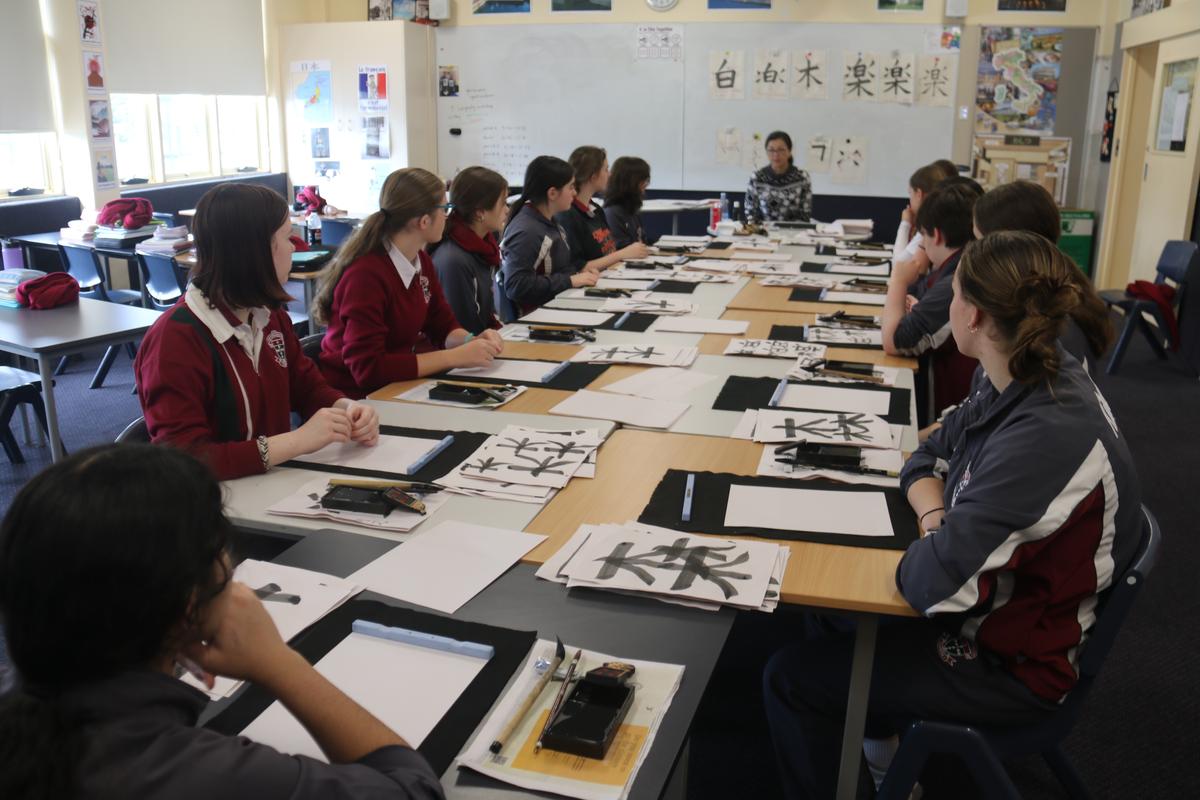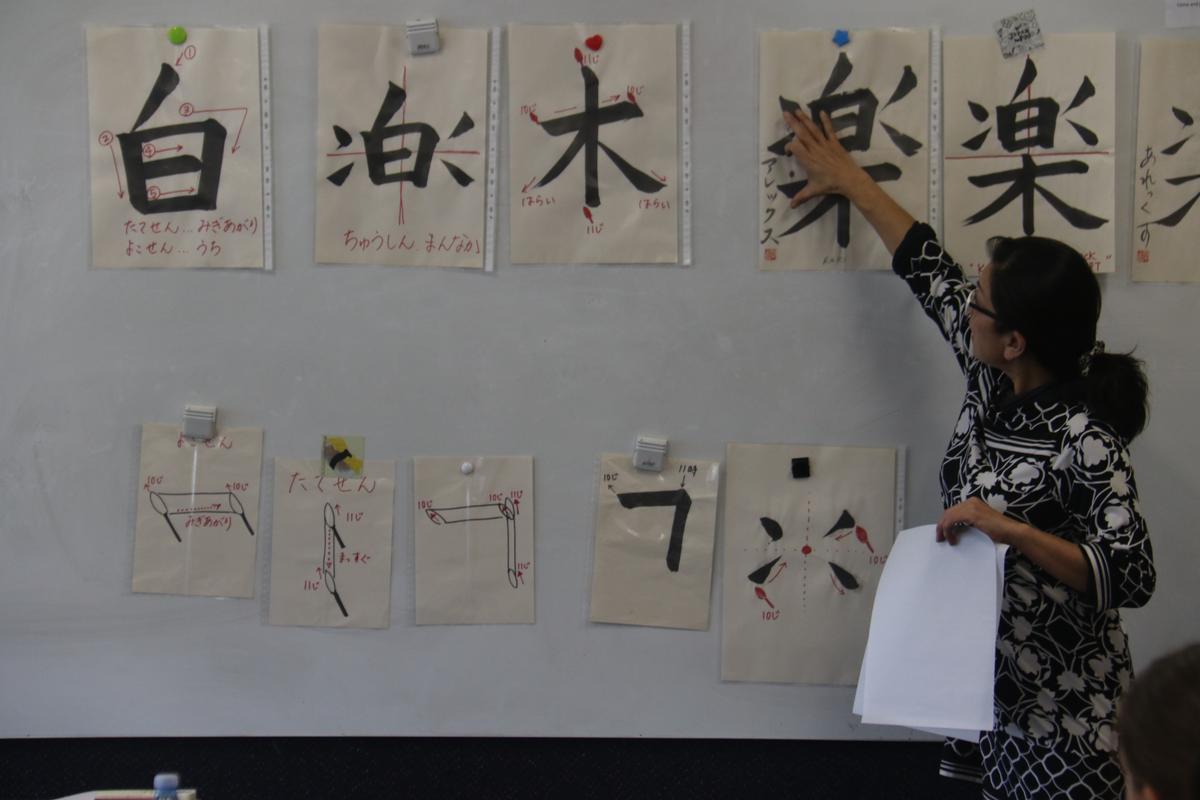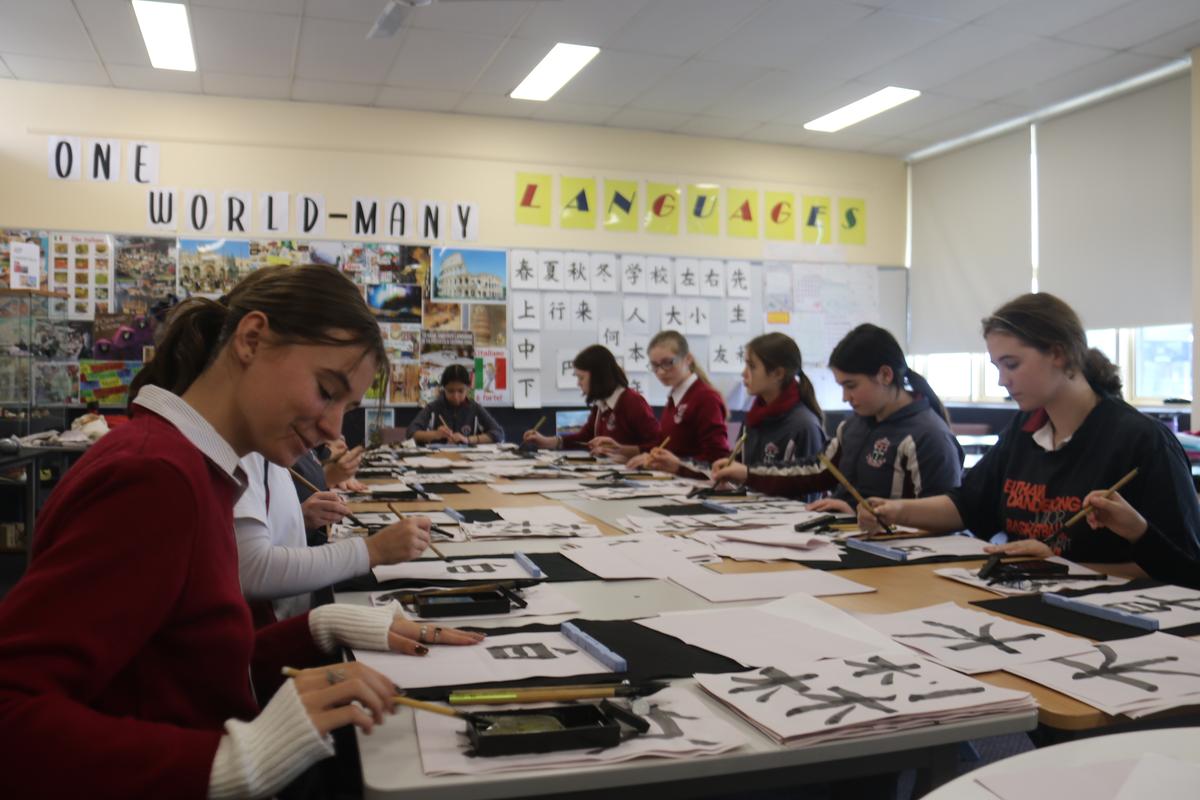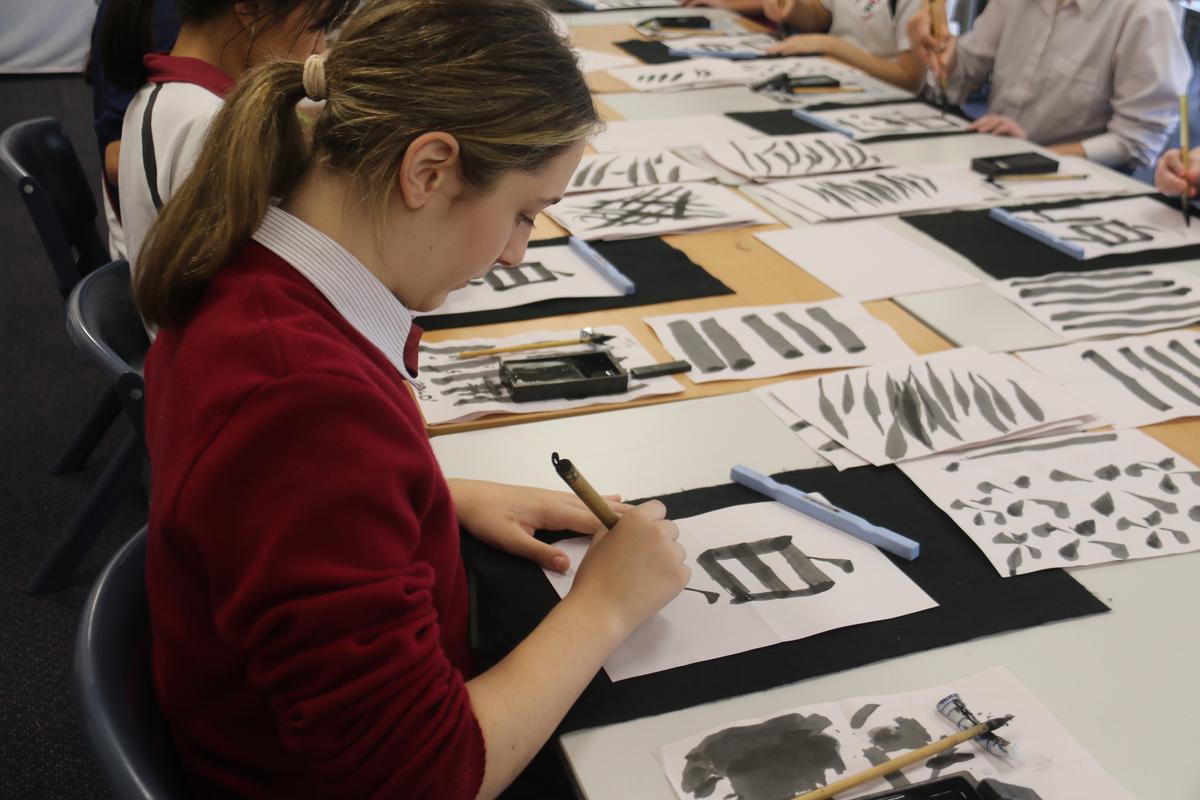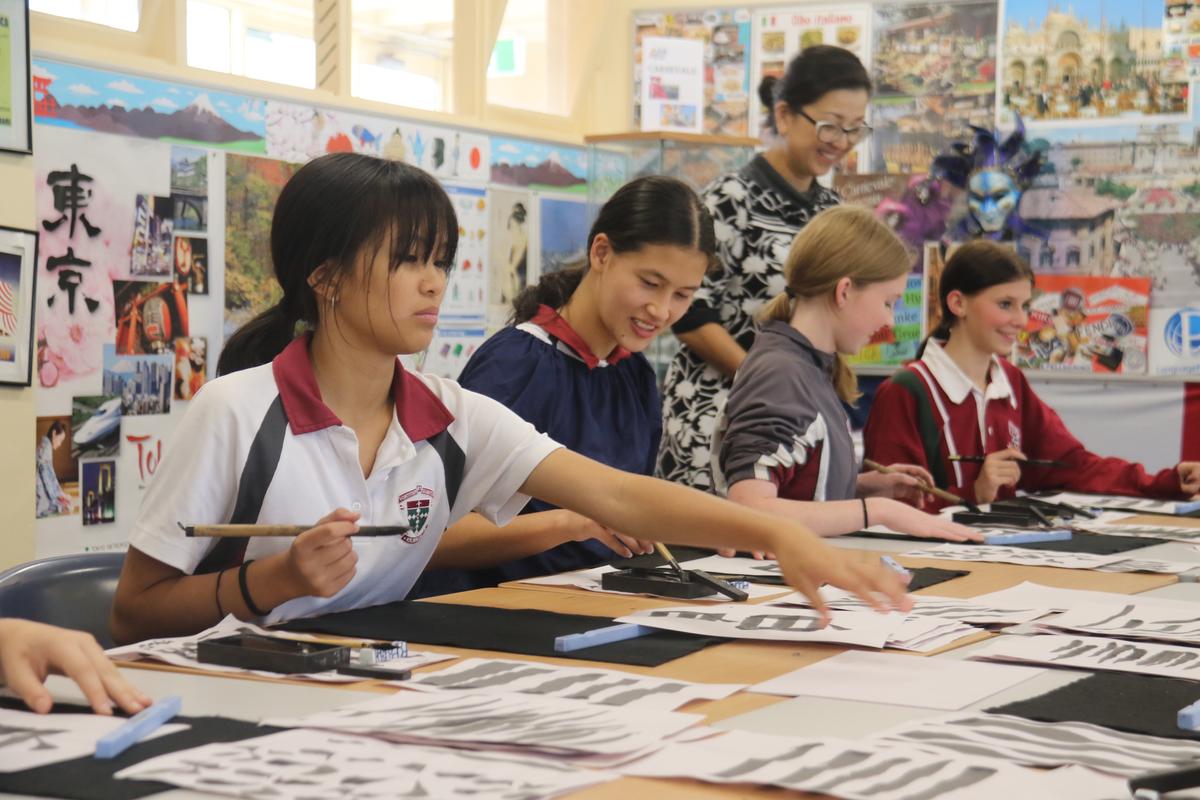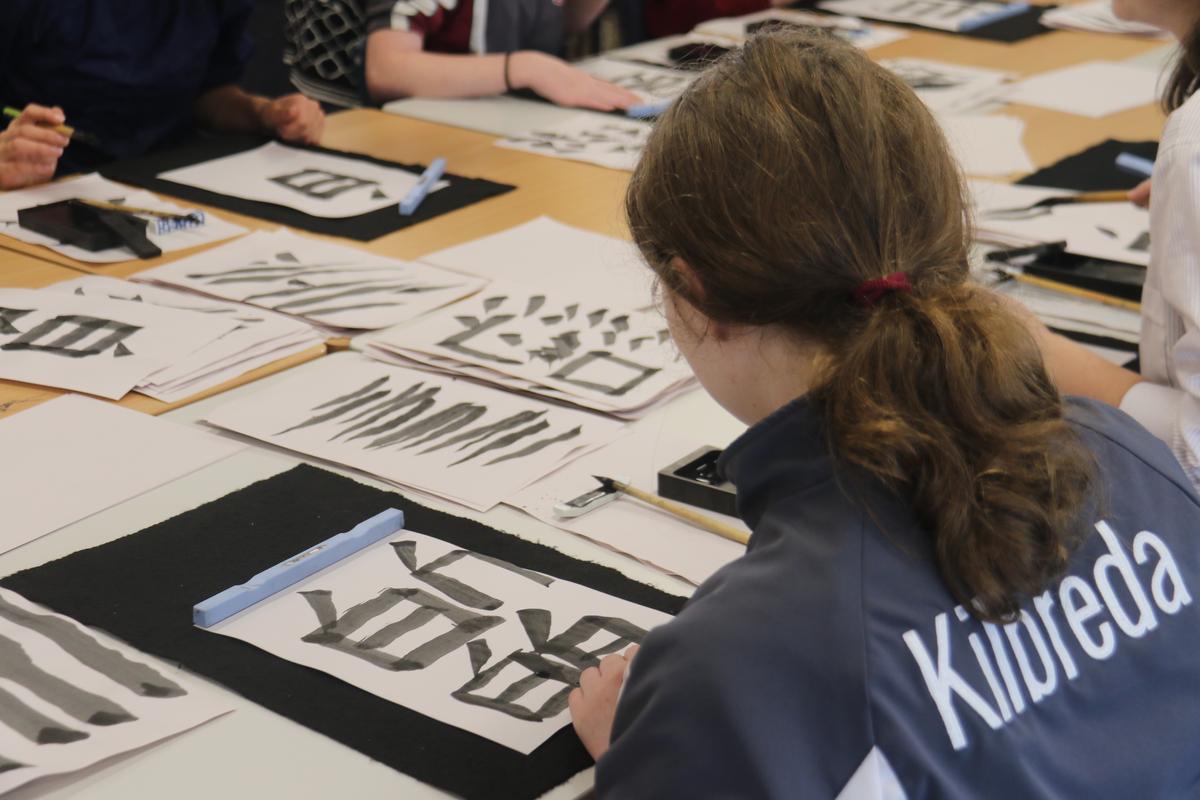Languages

Japanese Calligraphy Workshop
On Thursday 12 May, the Year 9, 10, 11 and 12 Japanese classes participated in a Calligraphy Workshop. After many cancellations and postponements over the last two years, we were finally able to try calligraphy, which is a big part of the Japanese culture.
At the start of the class we learnt about the different sized brushes that are used in order to write the characters. Our guest instructor, Miho Araki from 'Ebisu Design', brought in examples of different sized brushes and what they are used for – one being the length of the suitcase she brought in! We were also taught about sumi, a special type of Japanese ink used for calligraphy.
After this, we learnt the basic strokes used in order to write the Japanese characters. After enough practice and lots of help from Miho, we were able to have a go at writing the kanji character楽, which translates to ‘fun’ in English. We first tried writing the kanji character on the practice paper before writing it on the actual rice paper which Japanese calligraphers use.
Overall, the Calligraphy Workshop was a really fun experience for all of us, which enabled us to learn more about the Japanese culture and even go home with a new skill. Thank you Miho for coming in and teaching us!
Georgina Heath
Student Leader:
Languages (Japanese)
The Calligraphy Workshop was a unique experience that I am grateful to have participated in. It was both an enjoyable activity and an informative lesson about Japanese traditional writing.
We were taught about the creation of the kanji character for ‘fun’ and what other characters it may relate to. When it came to writing, our teacher instructed us on how to shape, hold and position the brush. She demonstrated how to make the ink and even explained the deeper meaning behind the process and design of the holder, which was really intriguing.
Throughout the session, one thing I found especially difficult was controlling how thick my lines were. Although the brush strokes were fairly straight forward, I pressed down too hard which took up more space than what was intended. We had to constantly regulate the positioning and pressure of the equipment as well as the amount of ink we picked up. It wasn’t like regular painting. However, that's what made it fun. I enjoyed the challenge of trying something new. Watching our teacher’s examples motivated me to try harder and be more careful with my brush strokes.
Overall, the workshop was a great chance to learn and indulge in Japanese culture. We even got to take home our finished products, which I have hung up on my wall. I would highly recommend this to anyone who is interested.
Nikita McFayden
Year 9
